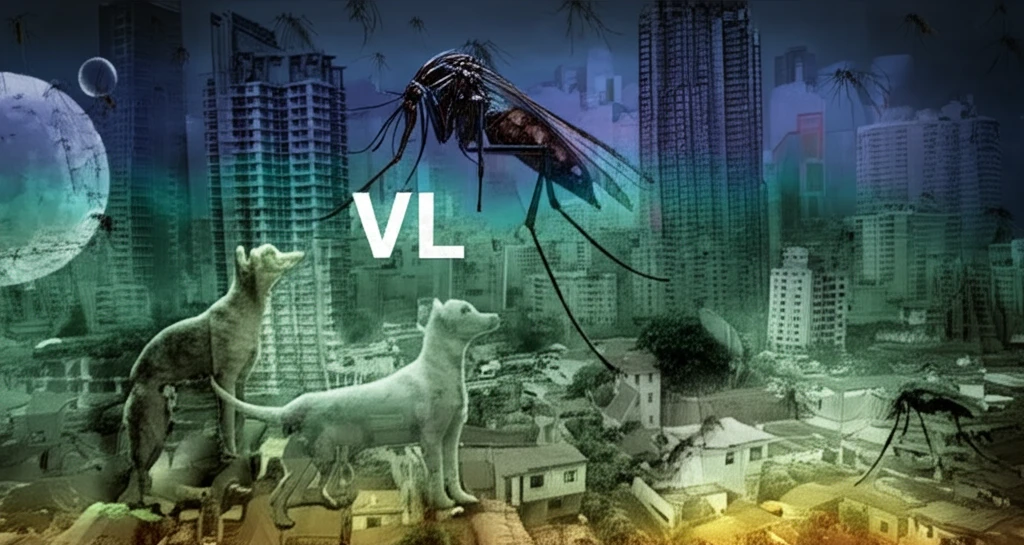
Unveiling the Urban Threat: How Visceral Leishmaniasis Spreads Among Us
"Discover the alarming rise of Visceral Leishmaniasis in urban settings and how socio-environmental factors fuel its spread. Understand the risks and protective measures you can take."
Visceral leishmaniasis (VL), a disease prevalent across Asia, Europe, Africa, and the Americas, poses a significant global health challenge. Affecting 88 countries, mostly those classified as developing, VL results in an estimated 200,000 to 400,000 new cases annually, with a stark 20,000 to 40,000 proving fatal. Understanding its spread and impact is crucial for effective prevention and control.
In Brazil, VL has become a severe public health concern due to its difficult management, high mortality rate, and widespread occurrence across all five regions. Recent years have shown a concerning trend: the urbanization of VL. This shift is closely linked to environmental, social, and demographic factors, along with the adaptation of the sandfly Lutzomyia longipalpis to urban settings and the presence of domestic reservoirs. These elements combine to create a complex web of transmission.
Araçuaí, located in the Jequitinhonha Valley of Minas Gerais, Brazil, presents an interesting case study. While recognized as an endemic area for VL, many aspects of its transmission dynamics remain poorly understood. This article will explore a study analyzing the spatial distribution of both human and canine VL cases in Araçuaí, shedding light on the socio-environmental factors that contribute to its occurrence within the city.
The Alarming Spread of VL: Key Findings from Araçuaí

A recent study focused on Araçuaí, Brazil, has revealed critical insights into the spatial dynamics of VL. The research aimed to analyze the distribution patterns of human and canine VL cases and identify the socio-environmental factors influencing these patterns. Here's a breakdown of the significant findings:
- Aggregated Patterns: Spatial analysis revealed that human and canine VL cases exhibited significant aggregation, suggesting localized transmission hotspots.
- Central Area Concentration: A higher occurrence of both human and canine infections was observed in the central areas of Araçuaí, highlighting specific zones of increased risk.
- Correlation Between Cases: A notable positive correlation was found between the densities of human and canine VL cases, reinforcing the role of domestic animals in the transmission cycle.
- Negative Correlation with Vegetation: Conversely, a negative correlation was observed between vegetation density (NDVI) and VL cases, indicating that areas with less vegetation might be more prone to VL occurrence.
Protecting Our Communities: Actionable Steps to Combat VL
The findings from Araçuaí offer valuable insights for targeted interventions. By understanding the spatial distribution and socio-environmental drivers of VL, competent agencies can develop more effective control strategies. This includes enhanced environmental sanitation, responsible pet ownership programs, and strategic vector control measures. Educating the public about these factors is key to reducing VL incidence and protecting communities.
